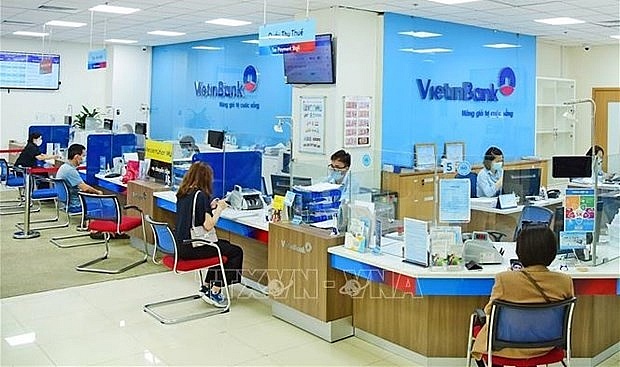Digitalisation: Best practices from international banks
Digitalisation: Best practices from international banks
Open Banking is a key driver of the digital transformation that the industry is experiencing today. Sylvester Kinuthia, head of Transaction Banking at Standard Chartered Vietnam shares his thoughts.
Digitalisation presents significant opportunities for banks to improve their customers’ experience, grow new revenue streams, monetise existing assets, and participate in a larger, mutually beneficial ecosystem. Open Banking is enabling the exchange of financial data between banks and third parties and has extended the use of application programming interfaces (APIs), which are unlocking a range of new opportunities.
A report by Accenture indicates that banks understand the need to embrace Open Banking to remain competitive, relevant, and win in the digital economy. This is clearly highlighted in their survey of executives at 100 large banks, where 65 per cent see Open Banking as more of an opportunity than a threat, 52 per cent see it as a way to differentiate from their traditional competitors, and 99 per cent plan to make major investments in this space.
Open banking is making its way around the globe, with many countries looking at how financial data can be shared and managed via open APIs.
Depending on the location, this can either be regulatory-driven (as in the EU, Hong Kong, and Australia), market-driven (as in India, Singapore, Japan, and South Korea), or hybrid-driven.
Regardless of the approach, it is clear that to successfully implement Open Banking capabilities, banks must be dependent upon the ability to work together with others. This means developing a successful ecosystem of partnerships through collaboration with others in the value chain, leveraging developer portals, collaborating with regulators, and educating customers.
In Vietnam, the government and the State Bank of Vietnam are already leading the way through the Digital Transformation Program to 2025, with a vision to 2030. They are doing so by building an ecosystem of partners, including government ministries, banks, utility companies, non-banking institutions, and other service providers, to connect them through access to the national population database, creating value-added services for the people and businesses.
At the same time, banks in Vietnam are already embracing Open Banking with a lot of value-add services now available using open APIs – this is improving the customer experience and driving collaboration amongst different players in the value chain. All these highlight the progress made as well as the numerous opportunities that lay ahead. They are driving the acceleration to review and improve the legal framework and amend relevant laws, such as the law on e-commerce, with the recognition of digital signatures, digital contracts, and digital vouchers.
This will help drive the integration, connection, and sharing of the national population database and gradually build a digital economy centred around people and businesses as Vietnam aims to grow its digital economy to 20 per cent of total GDP by 2025.
To implement an Open Banking strategy, banks should embrace an open platform model and identify the key capabilities and investments needed to make it happen. They need to embed themselves seamlessly into the everyday activities of consumers, retailers, and numerous other businesses by targeting deep and specific moments in their financial lives using external APIs.
They should develop strategic ecosystems of partners to create an environment for network effects to take hold, and they have to develop new business models by thinking afresh about revenue models, product development, and how to commercialise the evolution of open APIs.
That said, it is important to keep in mind that the strategy is more than just a technology transformation. At its core, it is a people and culture transformation that is needed to enable these network effects. Bank leaders should be looking to drive a digitally-centred transformation to achieve this. Doing so requires an unusually high level of coordination of cross-bank initiatives, spanning prioritisation, resource allocation, and collaboration in execution.
The challenge is to lead a holistic change programme that addresses the necessary culture, systems, and capabilities simultaneously. It requires investment, planning, and coordinated decision-making across the whole bank. For the cultural change to take effect and last, banks need to change how they work. This includes acquiring the right talent and developing their capabilities.
It also includes rethinking and streamlining governance, management, and budgeting priorities so that the organisation can move quickly and innovate. Governments, banks, and organisations in general have a role to play in ensuring that the right talent exists in the market. This includes having the right curriculums in the education system to help develop a future-fit workforce and providing the right environment (training, tools, materials, and people) within the organisation for people to up-skill and acquire the right capabilities.
At Standard Chartered Bank, our digital transformation journey aims to deploy a strong standard digital offering across our entire network to create superior value for clients. We have streamlined our open banking architecture to allow partners and clients to connect with us across multiple products and regions. We continuously strive to be the trusted financial partner to accelerate digitalisation and transformation for our clients, establish a marketplace with innovative financial and data technology partners to deliver market-leading solutions, and attract, retain, and develop world-class digital talent for the next generation of banking.
We have a cross-functional team formed from internal and external talent (including those from technology and fintech companies) that works across our coverage and product segments to bring new ideas and concepts to market in a new and innovative way.
But this must also come with a mindset change because delivering digital and data solutions requires an agile process and being comfortable with a test-and-learn approach. This is a culture that we continue to build and encourage across the entire organisation.
Talent is key to our strategy, and diversity in talent is our secret ingredient. We have employees from over 130 nationalities. This is a unique competitive advantage because we know how to adapt to multiple market realities and solve complex problems. A diverse team brings different perspectives and drives creativity and innovation. It’s a key strength for us, especially considering the diverse client base we have.
Open API directly supplies the ecosystem with core banking data (account details, payment transactions, and more), therefore, banks must ensure they have the necessary technological capabilities to manage security and build trust. Indeed, as an extension of its base IT security capability, a bank’s API security capability should be compliant with the same protocols, including data governance and data management capabilities, as any other customer-facing application.
In addition, it is important to apply a consistent set of security policies on top of all exposed API services. Moreover, imparting customer education is a key piece in this whole equation and a responsibility that banks should take on as it contributes to the acceleration of digital transformation.
Customers are unaware of the technological capabilities of data governance and data management, and more so of the relevant regulations that govern Open Banking, hence they hesitate to share their data with third-party providers. Banks need to work with regulators and other partners to educate and share messages addressing customers’ data privacy and security concerns. This is particularly important especially as most customers are experiencing digital banking and other technological innovations for the first time.
Collaboration with regulators is a key enabler and driver for digital transformation, including Open Banking capabilities. To ensure clarity on relevant regulations and a consistent approach to the digital transformation journey, banks should work with regulatory and industry bodies to review and improve existing laws and legal frameworks.
Communication lines need to be open and transparency needs to be maintained by sharing best practices and lessons learnt through thought leadership in specific areas and topics of interest. At Standard Chartered Bank, we are always open to working with our clients, partners, governments, and regulators as we all look to accelerate digital transformation in Vietnam. This will ultimately power the economy for the mutual benefit of our organisations and communities.
In conclusion, the effects of Open Banking will be much broader than the traditional banking functions. These could well become invisible as they embed themselves seamlessly into the everyday activities of consumers, retailers, and numerous other businesses – think of it as banking as a service or banking as a living business.
In this brave new world, banks will need to find ways to tilt the scales toward opportunities rather than threats. This will involve blending services to target deep and specific moments in customers’ financial lives, which will enable banks to expand beyond their existing customer bases by providing valuable functionality for other industries.
Moreover, this expansion of potential users will be crucial in nurturing a larger developer community that can accelerate product development and platform growth. Done correctly, banks can thrive – strengthening their customer franchises and brands, maintaining a defined culture, and growing business through open collaboration with the world beyond financial services.




















